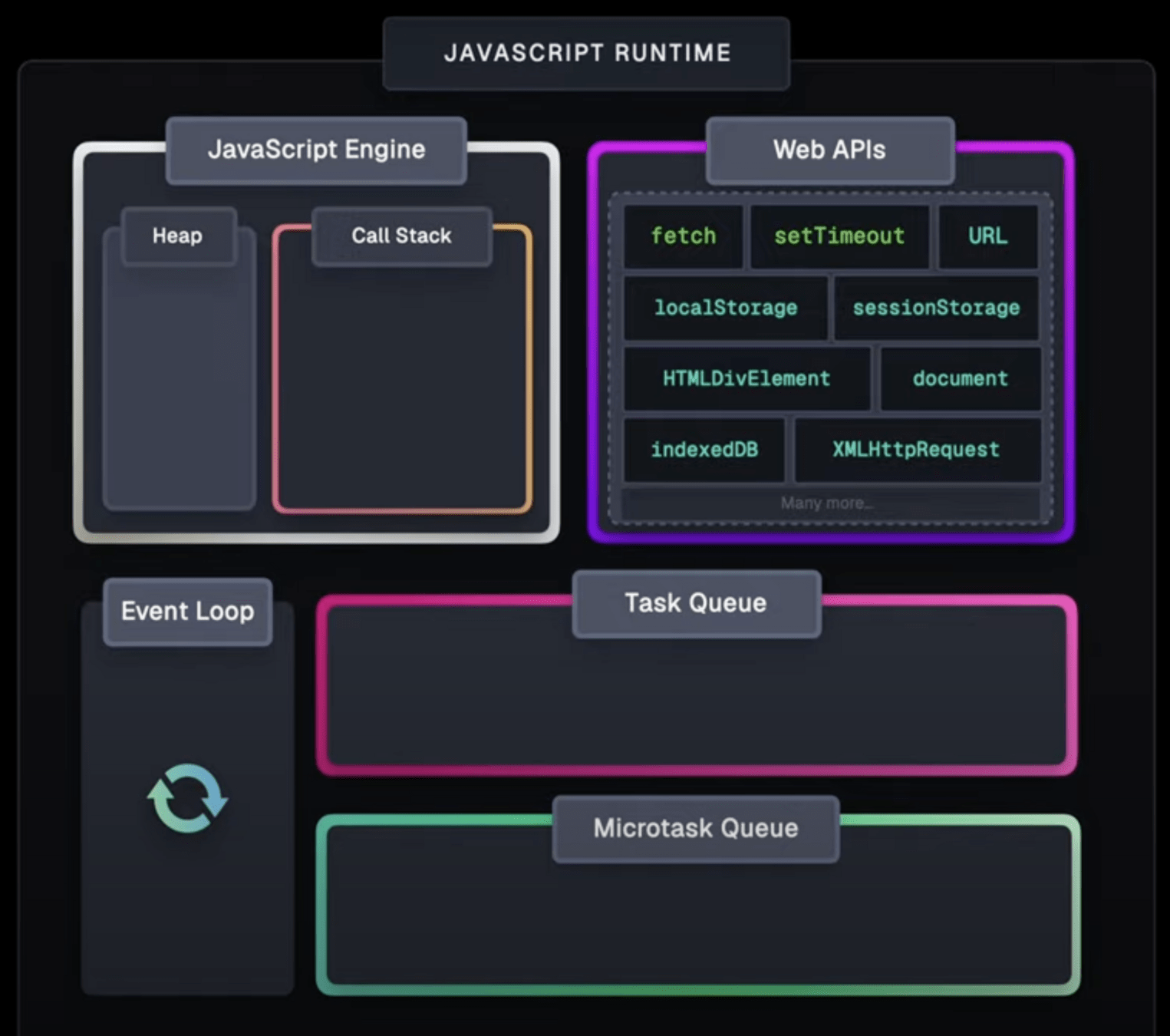
Scheduling in JavaScript

Scheduling in JavaScript
setTimeout:
- runs only once, after a time interval,
- since it is designed to run only once, it doesn't need to stop.
- Receives function reference/name, not function call
function sayHi(name) {
console.log(`Hi ${name}`);
}
const timerId = setTimeout(sayHi, 100, "John");
// clearing a timeOut
clearTimeout(timerId);
the delay:
- added in ms (miliseconds),
- it's the minimum time after which the code will be executed,
- can be 0
Scheduling in JavaScript
function sayHi() {
console.log(`Hi John`);
}
const timerId = setTimeout(sayHi, 100);
// clearing a timeOut
clearTimeout(timerId);
execution:
- setTimeout: as soon as the JS sees a setTimeout, it sends it to webAPIs,
- in the webAPIs, the timer expires,
- after the timer expires, the code inside is send to callback queue,
- once the call-stack is empty, the code from callback queue is send to call stack for execution
Scheduling in JavaScript
execution:
- setInterval: similar to setTimeout,
- the only difference: once the setInterval is sent to webAPIs, as the timer expires, a copy of the executable code is send to callback queue, and the timer gets reset
- the original setInterval remains in webAPIs to execute repeatedly


0ms delay:
- even though setTimeout was called with a delay of zero 0, it's placed on the callback queue and scheduled to run at the next opportunity; not immediately.
- Currently-executing code must complete before functions on the callback queue are executed,
- schedule the call “as soon as possible, but after the current script is complete”
Scheduling in JavaScript
function foo() {
console.log("foo has been called");
}
setTimeout(foo, 0);
console.log("After setTimeout");
// "After setTimeout"
// "foo has been called"
Nesting setTimeout instead of setInterval:
- The setTimeout here schedules the next call right at the end of the current one,
- Nested setTimeout allows to set the delay between the executions more precisely than setInterval,
- The nested setTimeout guarantees the fixed delay (here 100ms).
- That’s because a new call is planned at the end of the previous one.
Scheduling in JavaScript
/** instead of:
let timerId = setInterval(
() => alert('tick'), 2000);
*/
let timerId = setTimeout(function tick() {
alert('tick');
timerId = setTimeout(tick, 2000);
}, 2000);
// example 2
let start = Date.now();
let times = [];
setTimeout(function run() {
// remember delay from the previous call
times.push(Date.now() - start);
// show the delays after 100ms
if (start + 100 < Date.now()) alert(times);
else setTimeout(run); // else re-schedule
});
- Please note that all scheduling methods do not guarantee the exact delay.
- For example, the in-browser timer may slow down for a lot of reasons:
- The CPU is overloaded.
- The browser tab is in the background mode.
- The laptop is on battery saving mode.
- All that may increase the minimal timer resolution (the minimal delay) to 300ms or even 1000ms depending on the browser and OS-level performance settings. - The browser limits the minimal delay for five or more nested calls of setTimeout or for setInterval (after 5th call) to 4ms. That’s for historical reasons.